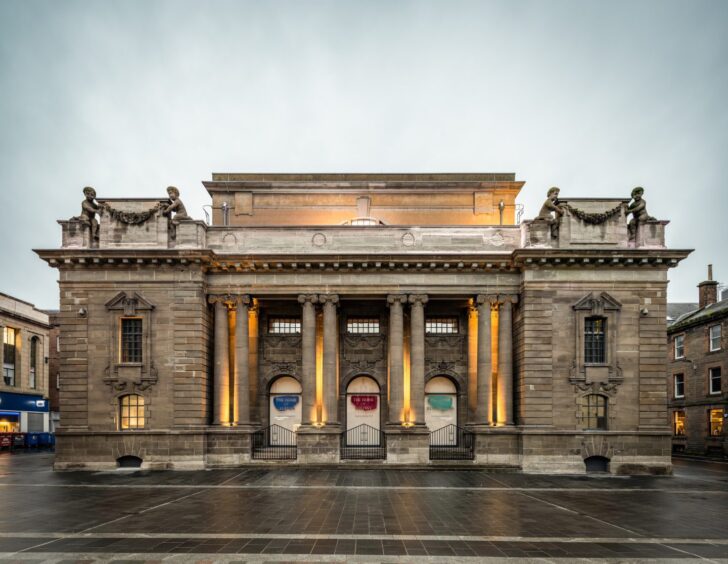A medieval murder victim, a Pictish labourer and a Bronze Age woman with backache will be among the stars of the show when the new Perth Museum opens at the end of March.
Museum bosses have worked with digital reconstruction experts to recreate the faces of early Perthshire residents.
And the latest scientific methods are helping to unlock the secrets of their lives.
They include a young man who appears to have met a grisly end close to the location of the £27 million museum.
His skeleton came to light when the Horsecross area was being excavated to make way for the new Perth Concert Hall in the early 2000s.
The remains were found crammed into a shallow pit beneath the foundations of the former Castle Gable tenement buildings.
Historians at the time said the manner of his disposal suggested he had died in violent circumstances.
And new analysis, carried out by Aberdeen University, has now confirmed he was likely murdered.
The man suffered blunt force penetrating injuries to two ribs and multiple rib fractures.
It was a tragic end to a short, and possibly brutal life.
The experts also found evidence of several episodes of growth disruption in childhood.
These may have been caused by periods of illness and/or malnourishment.
Perth Museum sheds new light on Bronze Age woman’s life
Another of the faces which will greet visitors to the new Perth Museum is that of a Bronze Age woman, who was buried near Rattray around 2000 BC.
She lay there until her burial chamber was uncovered by a tractor during ploughing at Lochlands Farm in 1962.
The skeleton was identified as female, 5ft tall and aged around 40 at the time of death.
More recent re-examination using radiocarbon, isotopic, DNA, dental and osteological analysis shows she was more likely in her 30s.
She had good teeth. But there is evidence of joint degeneration in her lower back, as well as several Schmorl’s nodes. These can arise from forces caused by walking, jumping, or traumatic injury and can lead to acute back pain.
Another reconstruction is of a Pictish man, whose skeleton was found at Bridge of Tilt, near Blair Atholl, in the early 1980s.
A large round stone disc at the end of his grave was thought to symbolise a quern stone, perhaps a nod to a life of agricultural labour.
Similar analysis shows he was alive in the 5/6th century and died in his 40s. He spent his childhood on the west coast or possibly in Ireland, settling in Perthshire later in life, and enjoyed a diet of pork and other produce from the land.
Perth Museum curator Mark Hall said it had been a privilege to work with colleagues to recover the stories.
And he is looking forward to sharing them with visitors when the attraction opens on March 30.
“I have come to think of these faces as avatars from the past, here to guide us through some of its realities,” he said.
Museum set to boost economy, say backers
The new Perth Museum will also be home to the Stone of Destiny.
The former City Hall has been refurbished with £17M from Perth and Kinross Council and £10M from the Tay Cities Deal.
It is forecast to bring tens of thousands of visitors to Perth and Kinross.
Project leaders say it will boost the local economy by around £2.5 million a year.














Conversation